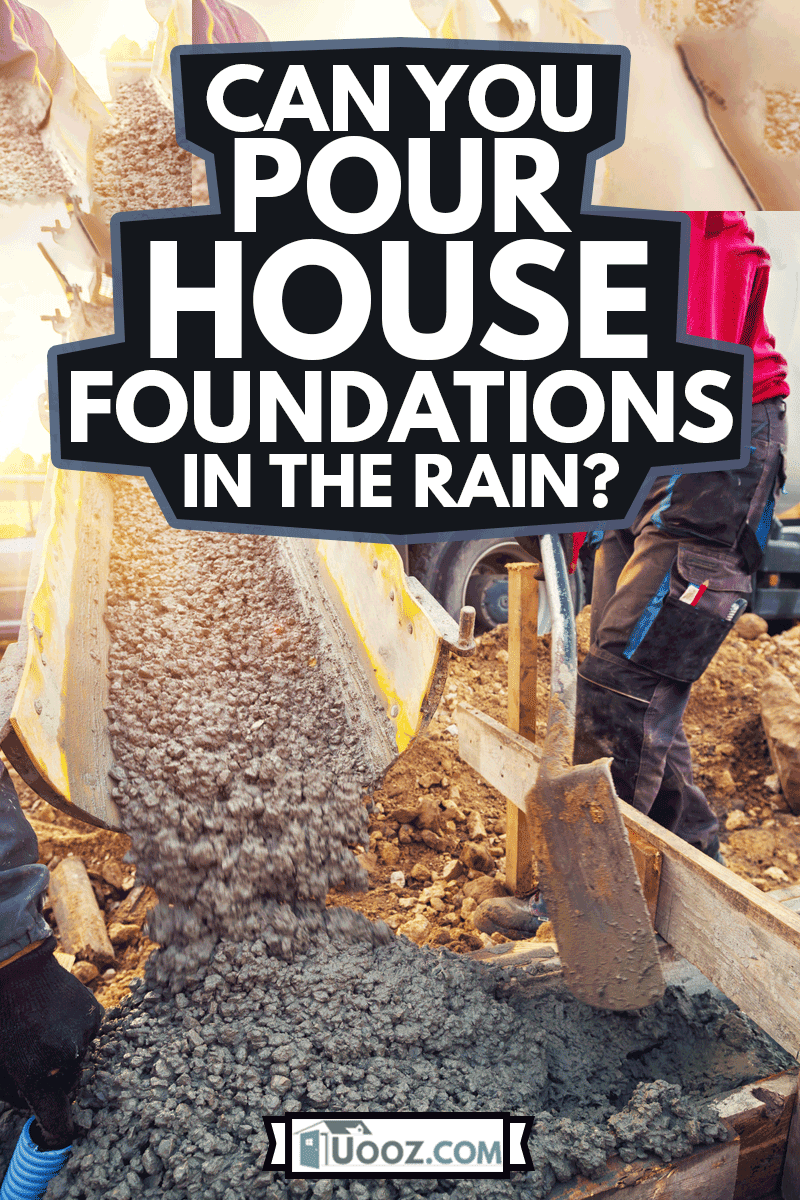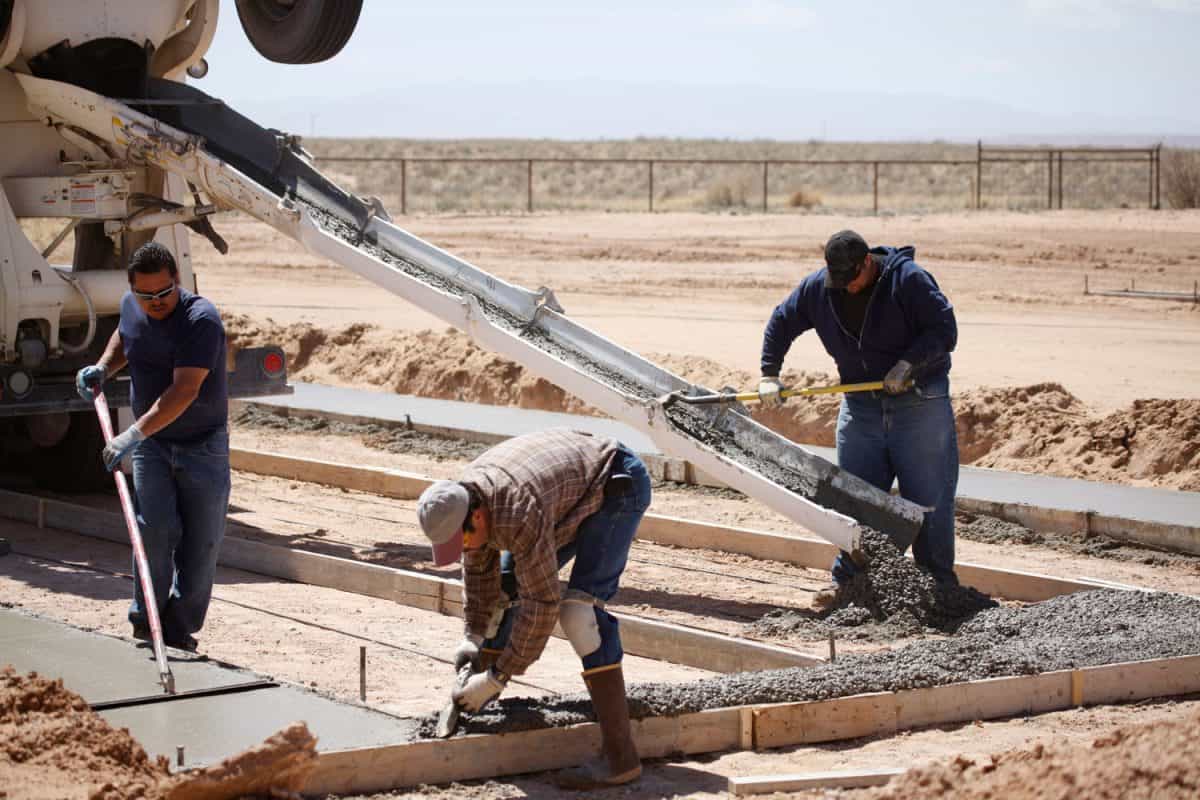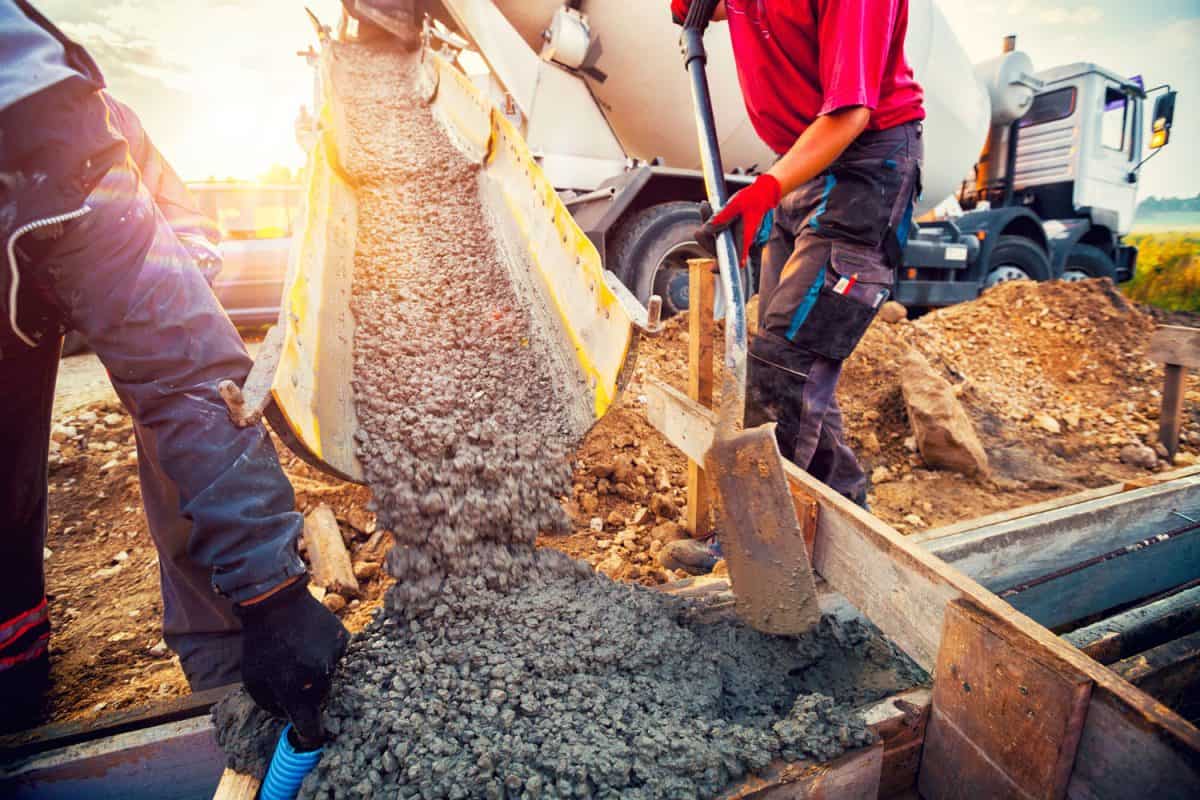The construction timeline of a home is complex and needs to be undertaken by a professional project manager. One of the things they consider is the possible effects the weather might have on specific job schedules. When pouring concrete for a foundation, the weather is one of the variables that a project manager must consider. You may be wondering what exactly water on the job site does to poured concrete, or more specifically if you can pour house foundations in the rain. We've looked into the ideal conditions to pour concrete to get the answer for you.
A house foundation should never be poured in the rain. The excess water could cause the concrete to weaken, deform, or not set properly after being poured. Wet concrete should be covered until it sets up; otherwise, its strength and durability would be compromised.
If you've wondered just exactly how rain affects house foundations and what else you should take into account when planning to pour a concrete foundation, we have put together several important things to consider. Continue reading to learn more about the process and what affects your immediate and long-term outcomes when pouring a foundation.

How Water Affects Concrete Pouring Jobs
Foundation pouring jobs almost always need to be rescheduled if the weather is going to be rainy on that day. There are many reasons to simply leave it for another time, even when deadlines are tight:
- The concrete surface will be weak from water saturation that floats to the top.
- It's much harder to get a confident and good seal on the concrete being poured.
- Fewer workers may come to the job site, and those that do work in the rain run the risk of slipping or injury in possibly muddy conditions.
- Mixing trucks can sink into the mud or have trouble reaching the pouring area.
All concrete manufacturers provide an appropriate ratio of concrete mix to water. Sticking to this ratio is essential to creating a good concrete mix that gives you strong, durable, and wear-resistant concrete as a result.
Altered Mix Ratio
Rain falling onto recently mixed concrete would directly influence this ratio, immediately creating a less than ideal mix quality. If it is only light rain or drizzle, some contractors put up a tent or stand to redirect water away from the foundation patch. If it rains for several days or weeks, contractors can work in sections and cover those areas until they are set.
Mold & Mildew
It's not just when concrete is being poured for foundations that moisture and wetness can present problems. Several issues can occur even after the concrete has been set that result from excessive moisture.
Some of these include moisture-related mold and mildew growth that can reduce the strength of the concrete and affect the health of people in the building.
Decreased Strength
Concrete's compressive strength also decreases in humid climates, which leads to decreased structural strength. Finally, humid or wet conditions over time can cause concrete to have a higher PH level, affecting the integrity of the concrete itself and any adhesive that might have been applied.
Scaling
Another major problem with pouring concrete in the rain is that the water will settle near the top of the concrete and create a very porous outer layer when it evaporates. This leaves the top of the concrete very weak and brittle, like a soft stone.
It is very easy to grind this outer layer of concrete away with heavy foot traffic or any kind of excessive force. This can ultimately lead to scaling, which is when the concrete surface looks very patchy and pitted out. It's just one of the possible unsightly and unsafe results of attempting to pour concrete during a rainy day.
For more information on just how to think concrete floor needs to be, we have a related article, "How Thick Does A Concrete Floor Need To Be?"
How Warm Does it Need to be to Pour a Foundation?

When it comes to concrete pouring temperatures, experts have unanimously agreed on the topic. The best temperature to pour concrete is between 40°–60°F.
When temperatures dip below 40°F, the chemical reactions that strengthen concrete over time slow down and lead to the weaker final result. If concrete curing temperatures are below freezing, the water inside the concrete can freeze and expand, resulting in cracks and other defects. This would compromise the integrity of everything built atop that foundation.
According to the American Concrete Institute, hot weather may also not be ideal. In conditions hotter than 77°F, the water used to hydrate and cure the cement can evaporate, increasing the concrete’s temperature and presenting problems such as cracking, weakness, and shrinkage.
When pouring in the cold, try to use hotter water to increase the concrete temperature and use cold weather products to help withstand the conditions. When pouring foundation in hotter climates, maybe add some ice to the mixing water to cool down the temperatures and avoid working during the hottest part of the day.
Is it Bad to Pour a Foundation in Winter?
While it's not ideal, winter and cold weather conditions should not stop you from completing your concrete foundation project. With the right precautions and adjustments, you could treat it as you would any other concrete pouring assignment.
The first step is to ensure that the ground under the foundation isn’t frozen and is free of any snow, ice, or debris. Ground volume can be higher than usual due to expanding ice in the dirt, so it would not be best to pour foundation on a lot like that.
Project managers must also employ methods to control the temperature of the concrete so that it does not get too cold. Workers also rely on the right ratios and admixtures to help the concrete cure and stay strong and durable despite the weather.
Can Foundation be Poured After Rain?
Foundation pouring should be planned with consideration to all kinds of inclement weather. Concrete can be poured after rain as long as the area is dry and cleared. Wetness at the job site can seep into the fresh concrete mixture and prevent it from setting properly.
Some contractors choose to put a tarp or large covering over small to medium concrete pouring jobs helps. The tarp would prevent any surprise showers or running water from a prior rainstorm to somehow affect a new concrete slab.
If you want to learn more about how other construction elements like drywall interact with water, check out our article, "Does Drywall Absorb Water Or Moisture?"
What is the Best Time to Pour House Foundation?

The best times to pour concrete for a home foundation would likely be either at 10 AM or after 8 PM. One of the objectives is to avoid the mid-day high point in temperature. Excessive heat prevents the concrete from setting as well as it could.
Working before 10 AM also gives the concrete additional drying time before it is worked on again on another day to maximize time spent on the job. After 8 PM, the temperatures in the area have usually become stable or start to cool down. This would be another great opportunity to pour concrete as it would be able to dry overnight.
The best time of year to pour house foundation would likely be the mildest, like Spring and Autumn.
Foundation Fundamentals
It can seem like a small detail to check whether it will rain on a given day before scheduling a construction task. Whether it's raining or not happens to have a very large impact on whether it is a good day to pour concrete foundation or not.
Wet conditions and extreme weather to either side will both cause the poured concrete to be less structurally sound and serviceable. Trying to schedule a project to be done faster and ignoring things like this can have disastrous consequences. Especially when pouring a foundation, you want to make sure tasks are being done properly because everything else will be built on top of this initial foundation.
